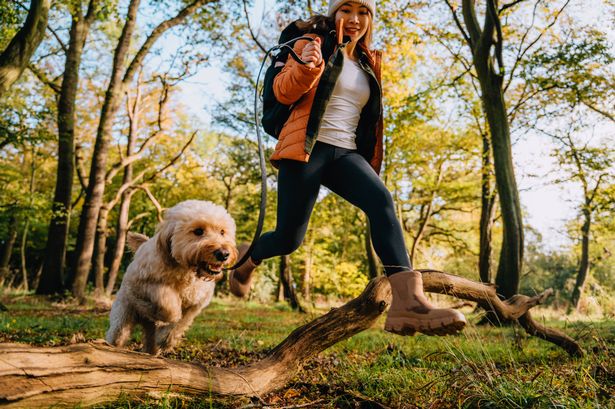
A veterinary expert has issued a crucial warning for pet owners as summer temperatures soar, urging vigilance for signs of heatstroke in their beloved animals. As the mercury rises, pets are increasingly susceptible to heat-related illnesses, and owners must be prepared to recognize and respond to these dangers.
Dr Suzanne Moyes, a prominent figure at Burgess Pet Care, highlighted the risks, stating,
“Heat stress in pets can happen at temperatures over 25 degrees. And, at 30 degrees or more, the risk of heatstroke increases significantly.”
She emphasized the importance of recognizing symptoms such as increased panting, excessive drooling, darkened gums, agitation, staggering, vomiting, or diarrhea. Immediate veterinary advice is crucial if these symptoms appear.
Understanding the Risks
Dr Moyes identified specific groups of pets that are more vulnerable to heatstroke. Old, young, and overweight pets, along with those sporting thick, heavy coats, face a higher risk. Certain breeds, such as pugs and bulldogs, are particularly prone to heat-related illnesses, as are pets with specific diseases or those on particular medications. The Express reports that smaller animals, especially those in outdoor enclosures or conservatories, are also at heightened risk.
Dr Moyes explained,
“Small animals – such as rabbits, guinea pigs and hamsters – are extremely sensitive to high temperatures, especially if they live in outdoor enclosures or conservatories. Unlike dogs or cats, they can’t sweat or pant effectively to help regulate their body temperature and therefore need more support from their owner in helping them stay cool.”
Practical Measures for Prevention
Positioning and Environment
One of the key recommendations from Dr Moyes is to be mindful of where pets are housed.
“It’s advisable to never keep your pets’ bedding and accommodation in a conservatory, especially in warmer months. Conservatories typically have poor air circulation, experience high temperatures, and lack cool, shady spots, making the risks of heatstroke more common if pets are kept here.”
For indoor pets, she advises setting up in a cool room, ideally on a lower floor, and keeping curtains and blinds closed to block out heat. Ensuring good airflow, either by opening windows or using a fan, is also recommended.
Dietary Adjustments
Dr Moyes suggests simple dietary changes to help pets cope with the heat.
“Avoid over-handling animals during the hottest parts of the day, especially for older animals. To help keep them cool, consider adding water-rich vegetables such as cucumber to their diet, to help boost their hydration levels.”
She also recommends adding ice cubes to water bowls and creating cooling snacks for dogs by freezing toys lined with meat or fish paste.
Cooling Techniques
In the event of heatstroke, Dr Moyes advises immediate action to lower a pet’s body temperature gradually.
“Move them to a shaded area and place wet towels near them to lower their temperature. For hot cats, rabbits, and guinea pigs, try gently stroking their fur with a cool, damp flannel, as this is the part of their body that they lose heat from.”
She cautions against placing any animal in water or using ice directly on them, as this can lead to shock.
Grooming and Bedding Adjustments
Maintaining a pet’s grooming routine is crucial during the summer months. Dr Moyes advises,
“Stay on top of grooming and brush long-haired cats, dogs, rabbits, and guinea pigs daily in the summer months as their thick fur can trap the heat. If a prolonged heatwave has set in, consider giving them a summer trim to keep them cool.”
Additionally, she recommends preparing pets’ bedding for warmer temperatures by removing thick blankets and using lighter materials like shredded paper. For pets in hutches, placing frozen water bottles inside can provide a cool surface for them to lie against. Ensuring access to fresh, cool drinking water is essential, with regular refills on hot days.
As temperatures continue to rise, these practical measures can help pet owners safeguard their animals from the dangers of heatstroke, ensuring a safe and comfortable summer for all.






